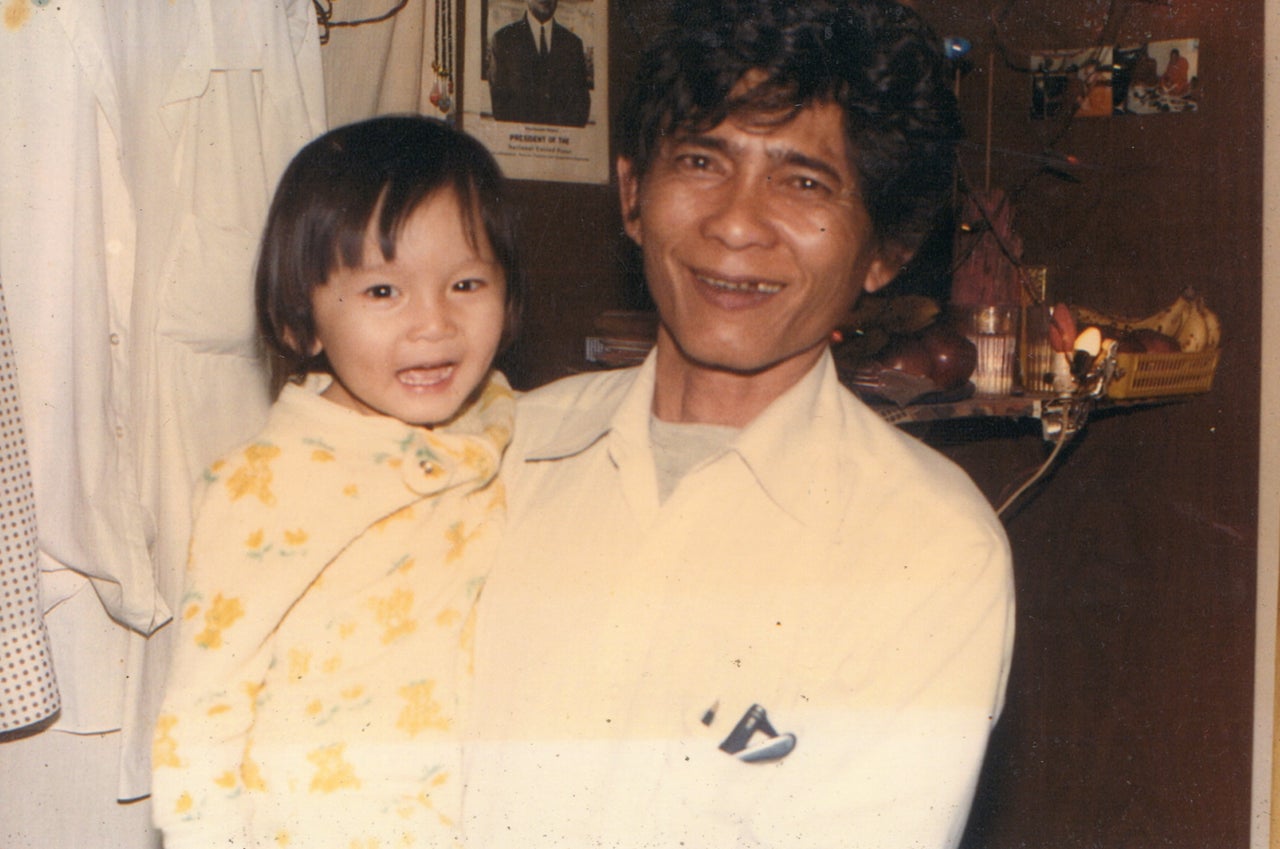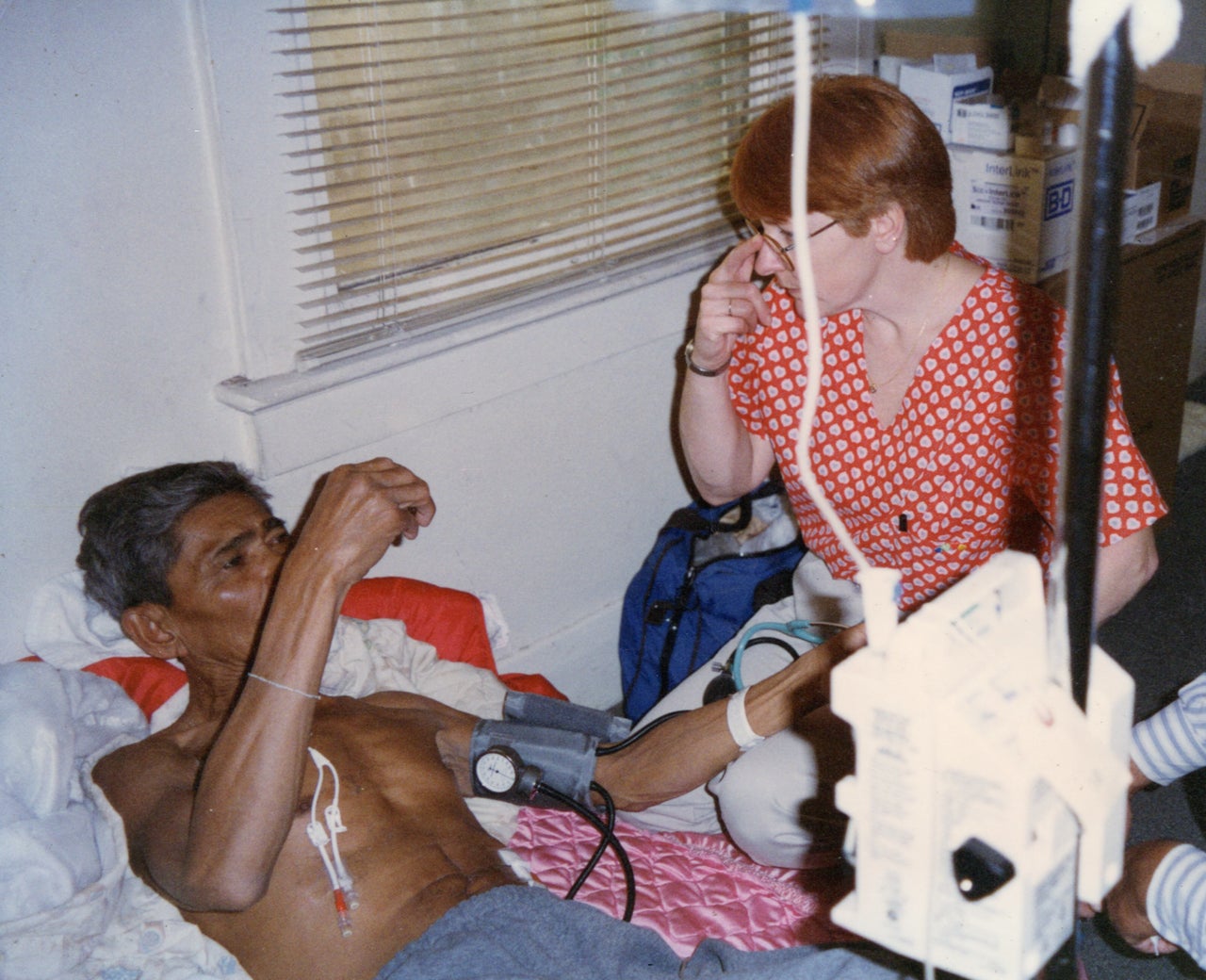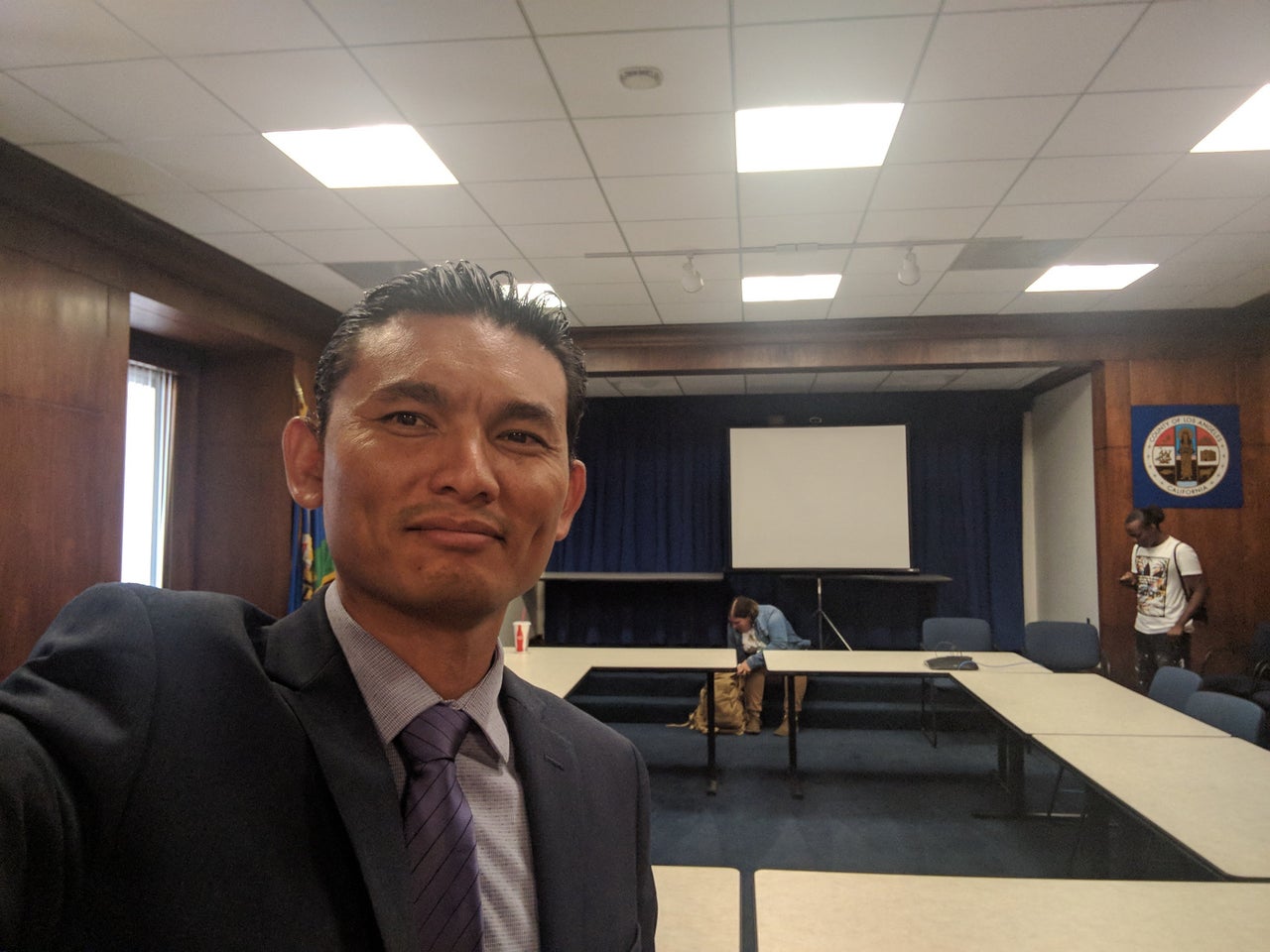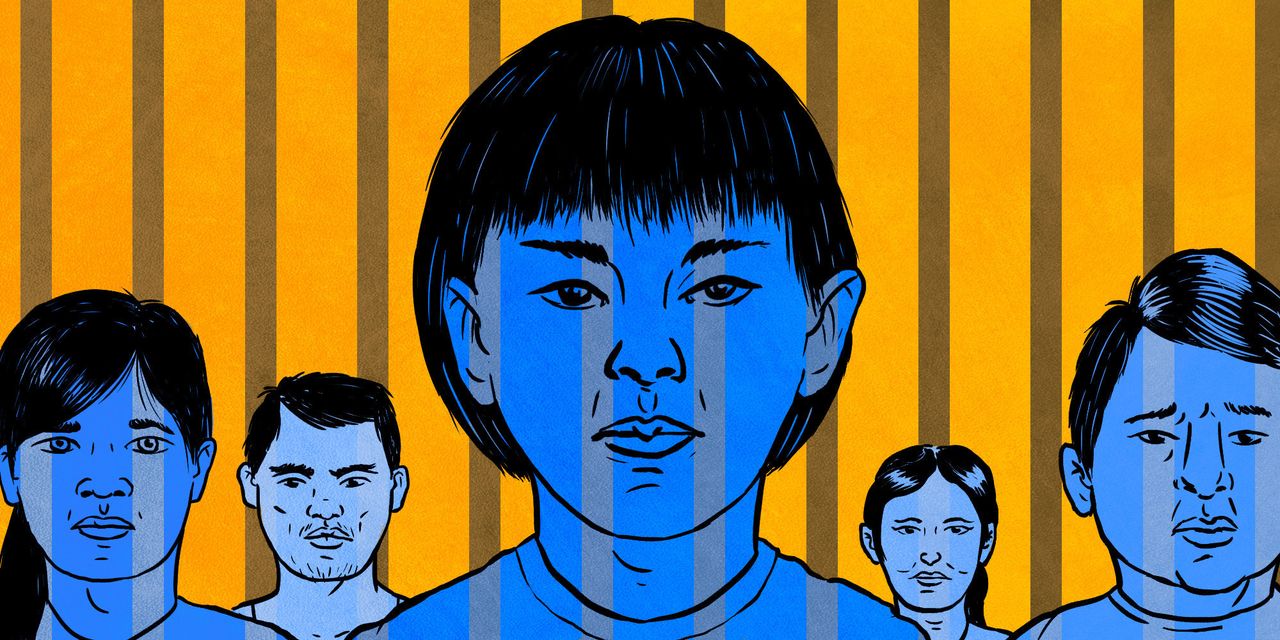Phal Sok’s family escaped Cambodia in 1979, fleeing a deadly Communist regime after the Vietnam War. They became refugees in the U.S., trading life in a war-torn country for massive social upheaval and a new start in Southern California with little support. When Sok was 16, his father died. Feeling even more lost, he turned to the streets. By his 18th birthday, he’d been convicted of armed robbery.
Now 36, Sok ― who was born in a Thai refugee camp, and has spent most of his adult life in prison ― faces possible deportation to Cambodia. But he’s never been there, “not for a single second,” he says.
“I would be in a country I’ve never known,” Sok told HuffPost. “I still have to try to wrap my head around that. It’s still a very real possibility... I think it would be traumatic.”
Sok’s fears are not unique. In fact, late last year, more than 100 Cambodian refugees were detained by U.S. Immigration and Customs Enforcement. Decades ago, these people had fled from countries shattered by war in hopes of starting over. Now, their lives are hanging in the balance once again. A few weeks later, ICE targeted another Southeast Asian refugee community ― this time residents of Vietnamese descent.
“Experts call this the migration-to-school-to-prison-to-deportation pipeline. With more aggressive ICE campaigns under the Trump administration, activists fear even more people will be funneled into this system.”
This dire situation is a sobering reminder of a larger, longstanding issue. Many Southeast Asian refugees to the U.S., going back decades, were given little support once they resettled. With few resources to help them get on their feet, many ended up following difficult paths: dropping out of school, committing gang-related or otherwise serious crimes and later facing deportation. Experts call this the migration-to-school-to-prison-to-deportation pipeline.
With more aggressive ICE campaigns under the Trump administration, activists fear even more people will be funneled into this system. Amid crackdowns on both legal and illegal immigration, advocates are calling for more awareness to this issue, and better community support for people who never had a proper chance to start anew.
Struggles in the Southeast Asian community
Asian-Americans are often stereotyped as star students ― nailing the SATs and heading to the Ivy Leagues. But statistics on the Southeast Asian community, a population born from refugees and resettlement, show a story that runs counter to the model minority myth.
Data reveals that the group has low levels of educational attainment. Compared to other races, Southeast Asian-Americans have some of the highest dropout rates in the country, and the majority of them have not attended college. About 34.3 percent of Laotian adults lack high school diplomas, as do almost 40 percent of Hmong and nearly the same percentage of Cambodian adults. That’s in stark contrast to the general U.S. adult population, in which almost 90 percent of people finish high school or get a GED certificate.
A great many refugees have also had contact with the criminal justice system. In the years following the mass resettlements caused by the Vietnam War, imprisonment of Southeast Asians ballooned. The Asian-American and Pacific Islander prisoner population increased by 250 percent in the 1990s. In areas with high concentrations of AAPI, the criminalization of the immigrant community was especially evident: Laotians and Vietnamese, for example, were among the top four most arrested groups in 1990 in the San Francisco Bay Area.
Unlike most criminal offenders, refugees who’ve been through the justice system face eviction from American society. Some grapple with the prospect of going back to the very countries they fled. Southeast Asian immigrants are three to four times more likely to be deported for old criminal convictions compared to other groups of immigrants. Despite most being legal residents with green cards, at least 15,000 Southeast Asians have received final orders of removal over the past two decades.
Many of these issues can be traced back to the scant tools provided to Southeast Asian refugees in the years following their resettlement, making it all the more difficult for families to assimilate and ascend in American society.
A dearth of resources bars refugees from the American Dream

Sok’s story ― one of confusion, isolation and entry at a young age into a harsh penal system ― is in some ways incredibly common.
His family fled Cambodia after the Khmer Rouge, the notorious Communist group, seized control of the country. The violent regime, led by the dictator Pol Pot, would ultimately bring about the deaths of more than 2 million people as individuals were labeled enemies of the regime or died through starvation, disease or overwork in labor camps. Sok’s own parents were subjected to abuse in labor camps before they escaped, and his father sustained serious injuries from being beaten in the back with a rifle.
Sok spent the first two months of his life in refugee camps before his family relocated to California, settling in Long Beach, which many other Cambodian families also eventually called home. His father, who was disabled as a result of his time in the camps, was unable to work and helped support the family through disability. Sok’s mother left the family when he was 2 years old.
“You come from a country and have no money and are told to survive,” he said. “My parents struggled financially, and a lot of those struggles caused my parents to separate.”
The family lived in poverty, but Sok was used to it. Many Cambodian families around him lived the same way, and countless other Southeast Asian refugee families could relate. Pew notes that in the 10 years following the enactment of the Refugee Act of 1980, the U.S. took in almost 600,000 Southeast Asian refugees amid the humanitarian crisis spurred by the Vietnam War ― a peak in modern refugee waves. (The total number since 1975 is twice that.) These refugees’ lives following resettlement, however, were not given continued attention.
“There’s a lot of support when you immediately come here ― finding them housing right away, getting settled into the neighborhood,” said Katrina Dizon Mariategue, who heads up the Southeast Asia Resource Action Center’s immigration policy and mass incarceration work. “But it’s all short-term remedies.”
“We would get called "chinks" and "Chinamen," even though we weren’t even Chinese.”
- Phal Sok
Refugees were often resettled in poorly funded urban centers like Long Beach and Stockton, California, or the Bronx, New York. According to a paper in the Asian American Law Journal, resettlement programs also failed to account for the linguistic and historical differences between Southeast Asian refugees and refugees from other regions. Once in the U.S., these immigrants were mostly left to navigate the new country themselves. It was a process that did not come easily, as the families often arrived with little knowledge of U.S. culture and language.
Moreover, though refugees fled widespread violence in their homelands, many encountered danger once again in their new neighborhoods. In fact, about 70 percent of Cambodian refugees in Long Beach, where Sok lived, reported exposure to violence following their resettlement in the U.S. And at school, these refugee children’s foreign backgrounds made them easy targets for bullying, said Nathaniel Tan, a member of the Asian Prisoner Support Committee who works with many in the Southeast Asian community. They spoke different dialects. They ate “strange” foods. They were from unfamiliar countries. They were poor.
The bullying stings, says Sok.
“We would get called ‘chinks’ and ‘Chinamen,’ even though we weren’t even Chinese,” he said. As the years went by, the bullying got more aggressive. But “we Cambodians stuck together because that’s how we knew we were safe.”
Many kids in Sok’s position had trouble connecting with their parents, who, having fled from places damaged by war and political turmoil, were often dealing with trauma of their own. At the time, Mariategue told HuffPost, mental health resources were sorely lacking for Southeast Asian immigrants, and seeking help was taboo in many of their cultures. Many parents were also juggling work as families attempted to climb out of the widespread poverty in their communities.
“Our family had witnessed some of the horrible things inside the camps ― a lot of beatings ― and had seen a lot of people getting killed,” Sok said. Sok’s father had always been a strong source of support for his son, but he dealt with his own trauma for years following his escape from Cambodia.
““What we found was when refugees got bullied or don’t assimilate into society, they participate in informal economies or informal groups that grant protection or money ― what we know now as gangs.””
- Nathaniel Tan
Difficult circumstances eventually led many young people down a rough path, Mariategue said. Belonging to families with little economic mobility, and branded outsiders at school, children from these refugee families often felt lost. Many dropped out or were pushed out of school, unable to deal with the effects of trauma or post-traumatic stress disorder in their families. Others dropped out because of the language barrier and the lack of teachers who actually understood their culture. And a significant amount of refugee children found the bullying and isolation unbearable ― so they turned to the streets or elsewhere for help.
“What we found was when refugees got bullied or don’t assimilate into society, they participate in informal economies or informal groups that grant protection or money ― what we know now as gangs,” Tan said. “A lot of the guys that we work with at San Quentin joined gangs because they were picked on for not speaking English, and they needed to join gangs because they needed to protect themselves.”
Some gangs targeted Southeast Asian youth to attract them to join, Tan says. But bullying also led many young men from refugee and immigrant families to form their own organized crime groups, including the notorious Tiny Rascal Gang and the Asian Boyz.
In some ways, these groups became sources of emotional comfort and solace ― a way for alienated teens and young men to connect with a “family” when it seemed their parents couldn’t help them. Finally, they felt they fit in somewhere.
Sok never joined a gang. However, he did turn to the streets after his father’s death from cancer. Left with no strong support at home and unsure how to cope with the tragedy, Sok said, he struggled in classes and was handed school dropout papers soon after, becoming a victim of school pushout. He began regularly getting in trouble with his friends, many of whom were also refugee kids.

But there were consequences. Many troubled kids from Southeast Asian-American families got involved in serious crimes, such as drug dealing, theft, breaking and entering and armed robbery ― crimes that were “a direct result of economic insecurity,” Tan said. At around this same time, politicians and law enforcement officials were leading a national crackdown on crime, and people of color were the most zealously policed. As mass incarceration became a serious issue in the U.S., the law was far from forgiving to Asian-American youth. During the ’90s prison boom, Asian juveniles in California were more than twice as likely to be tried as adults compared to white juveniles who committed similar crimes.
Sok himself was ultimately sentenced to 23 years and 8 months for armed robbery. Though he was 17 at the time, he was tried as an adult. During his time in prison, he discovered many more Asian youth who could relate to his circumstances.
“It’s a very common theme. Because of the people I did hang around with, we’re similar people in similar situations,” he said. “While in prison, I can’t tell you how many Asians I met who were juveniles but were tried as adults.”
Incarceration is not the only repercussion of criminal activity for Southeast Asians like Sok. Because of their status as refugees and green card holders, a criminal record often means an order of removal. An immigration law from 1996 expanded the range of criminal offenses that could lead to detention or deportation ― and the policy was retroactive, meaning people who had committed crimes long before were still subject to harsh penalties. A report on Cambodian deportees notes that due to their status as non-citizens, these refugees had difficulty arguing against their own removal. Many did not have extensive knowledge of immigration laws surrounding deportation, either.
The results were often grim.
The devastating effects of deportation
Thousands of people from Southeast Asia have been deported back there from the U.S., despite having turned their lives around and long avoided contact with the criminal justice system. Returning to countries they once fled as refugees has proved devastating for the deportees and their families alike. Many have left behind children or partners, and have been forced to start anew in countries they’re no longer familiar with. A 2004 survey found that 70 percent of deportees and family members showed signs of PTSD.
New surroundings and insufficient language skills cause many returnees to turn to drugs or alcohol to cope with the stresses of repatriation. A report on Cambodian returnees notes that some revert to crime to support their habits and are once again incarcerated. And while some returnees eventually accept their circumstances, others never quite integrate into society. At least six Cambodian returnees have died by suicide since 2002, the research said.
“Deportations make us less safe as a community. Most of the people facing deportation in these raids made mistakes when younger, but have peacefully lived in their communities for years or even decades.”
- Anoop Prasad, Asian Americans Advancing Justice - Asian Law Caucus
Sok was released in 2015, a few years early, as he was found suitable for parole by California’s Board of Parole Hearing. But upon his release, he was detained and later issued an order of removal. As he awaited travel documents for Cambodia, he was able to live outside of detention on orders of supervision. However, he was redetained just four months later so he could be flown to Cambodia.
This time, Sok attempted to contest the removal, filing a Petition for Review to halt his deportation flight. His case was reopened and he attained a bond hearing soon after. Sok was eventually granted bond in November 2016. With the help of his community, who came together to pay the sum, he was released.
His next hearing is scheduled for November, and deportation remains a very real possibility. If he’s sent to Cambodia, he imagines he’ll struggle to find a job, develop relationships and remain mentally healthy.
“I’ve been incarcerated and things have happened inside incarceration. I’ve seen violence in the streets, I’ve lost friends and I’ve been through the trauma of losing my dad,” he said. “But the trauma of deportation and being separated from my brother and my community ― I don’t know what that’s like.”
“I’ve been separated in the sense of being incarcerated,” he went on. “[But] that’s not beyond an international border. I have my own questions and my own doubts and my own concerns.”
A temporary restraining order halted the deportation of more than 70 Cambodians in December. However, many of the Vietnamese detained by ICE were not spared. On Dec. 20, 65 Vietnamese arrived in Vietnam from the United States, according to Tan. What their lives will be like there is difficult to predict.
“It’s projected that 200 Cambodians will be deported in 2018, which would be the greatest number of deportations the Cambodian-American community has ever seen.”
Meanwhile, it’s projected that 200 Cambodians will be deported in 2018, which would be the greatest number of deportations the Cambodian-American community has ever seen. Anoop Prasad, staff attorney for Asian Americans Advancing Justice - Asian Law Caucus, explained that deportations generally do far more harm than good.
“Deportations make us less safe as a community. Most of the people facing deportation in these raids made mistakes when younger, but have peacefully lived in their communities for years or even decades,” Prasad said. “Deporting them does nothing to make us safer. By contrast, the enormous impact of losing a parent to deportation or incarceration on children is well documented. The impact of deportations lasts for generations, making families and communities less healthy and less safe.”
Advocates want to see more awareness

Amid the looming threat of more deportations, activists say serious change is needed. The immigration debate often neglects the particular issues of the Southeast Asian community. And rhetoric from both the Obama and Trump administrations has suggested the deportations are somehow justified.
“President Obama and 45 have frequently used the ‘felons not families’ rhetoric to justify deporting people with run-ins with the law ― when in actuality, if you come from crippling poverty, underserved communities, overpoliced neighborhoods and under-resourced schools, there is a higher likelihood of you having a record,” Tan said. “Our communities live in these neighborhoods and in turn, felons are our families.”
Refugee communities ― which by definition take shape amid struggle, confusion and loss ― need equal access to the formal economy, Tan said. This means assistance and services in languages, like Khmer, that are not often available. There’s also a need for mental health resources attuned to the particular needs of this community, which is marked by intergenerational trauma.
Advocates also say refugees need better access to information on immigration policies. Often, refugees do not understand the importance of naturalization and the added rights that come with citizenship status, Mariategue says.
As for Sok, he’s dedicated his time while out on bond to working in juvenile justice and helping incarcerated youth. He’s currently an organizer with the Youth Justice Coalition, based in the Los Angeles area. It’s a way, he says, to prevent others from going down the same path he did. Sok feels it’s incredibly important to encourage kids to stay in school, and to help them deal with the trauma they and their families have experienced. He also believes it’s crucial for community members to get to know those who’ve been through the pipeline as people, and not just as criminals.
“I try to emphasize to the community that people are not defined by the worst act for the rest of their lives,” he told HuffPost.
And when refugees are facing deportation, Tan said, the community needs to show up for them.
“It means coming to their court hearings, demonstrating they have support in the community, working with their families and finding fair representation,” he said.
Immigration hard-liners argue that lawbreakers should be ejected from America. But advocates say the all-or-nothing approach is out of all proportion to reality.
“In the vast majority of cases, we are talking about people who came to the United States as children fleeing genocide with their families,” Quyen Dinh, executive director of SEARAC, previously told HuffPost. “These are individuals whose crimes were often equated with poverty and youth.”
“Many were released years or decades ago and found a new path forward, whether in a career, education, family, or faith,” she went on. “To use their past served criminal sentences to justify punishing them again is inhumane and unjust.”
